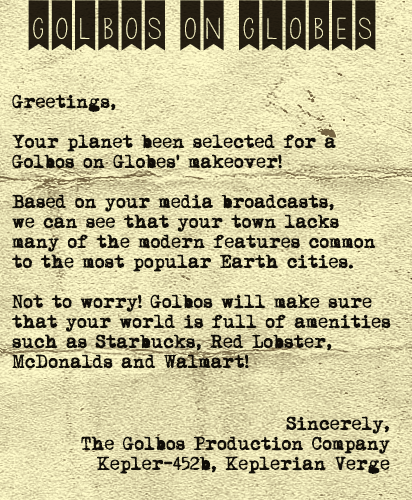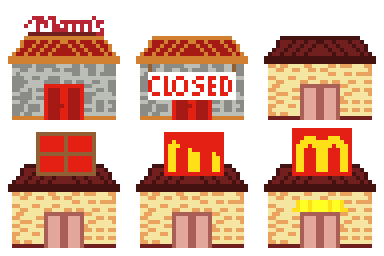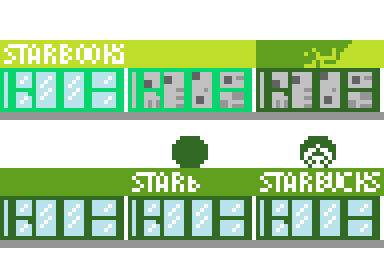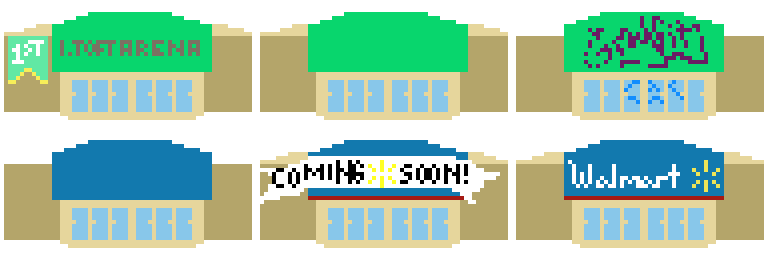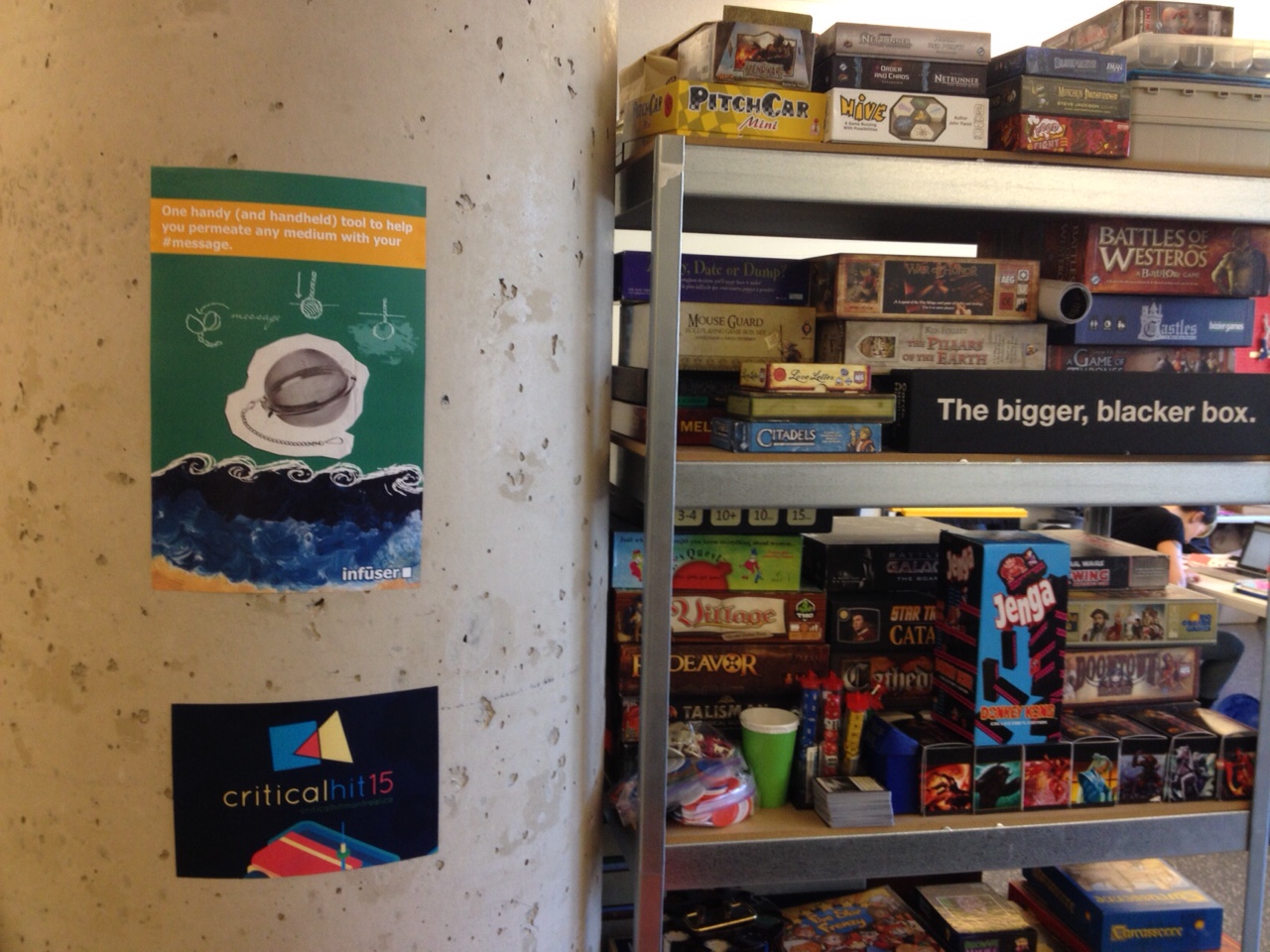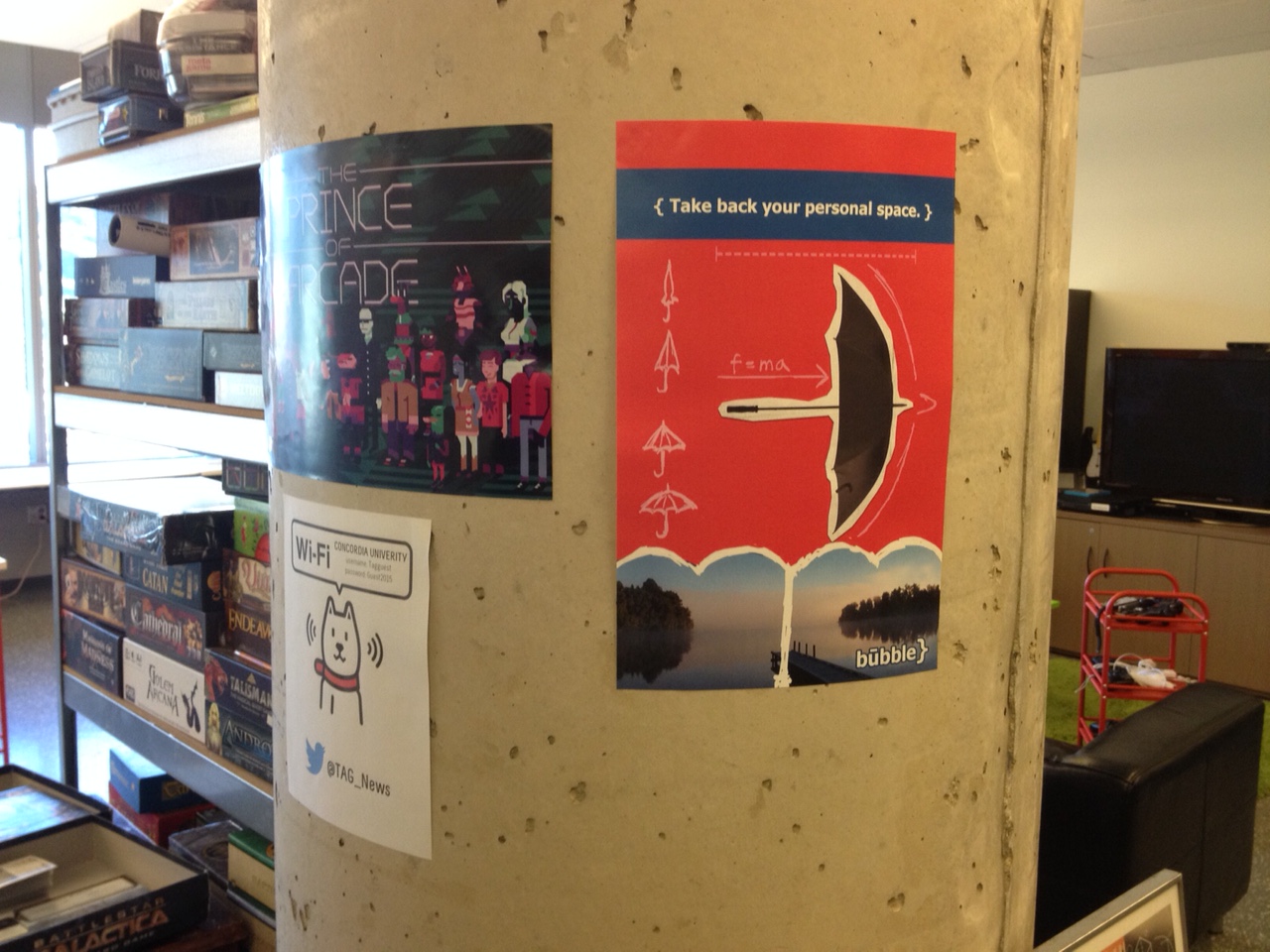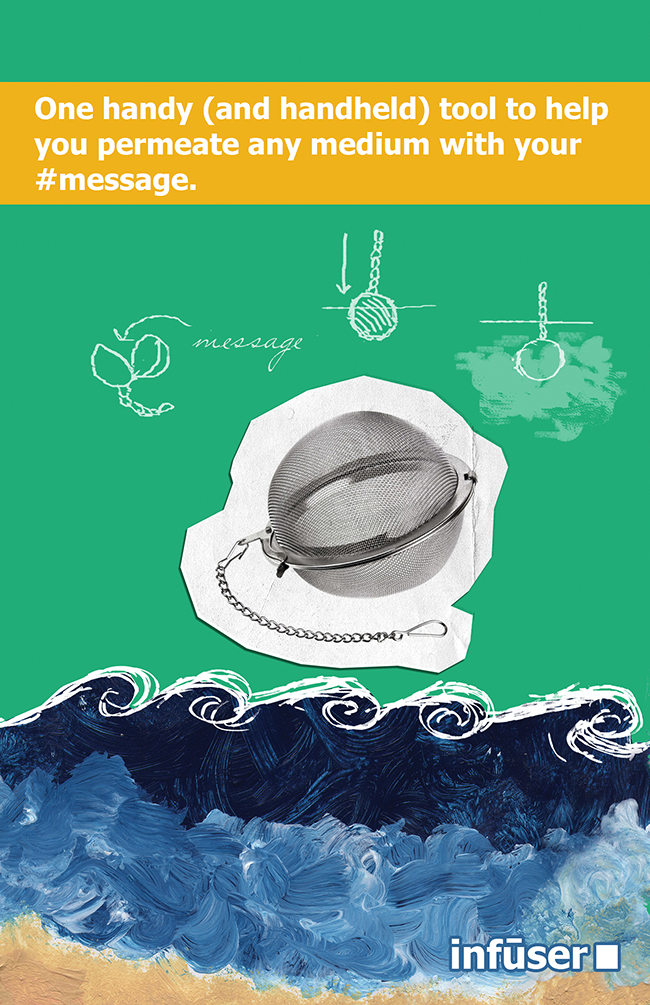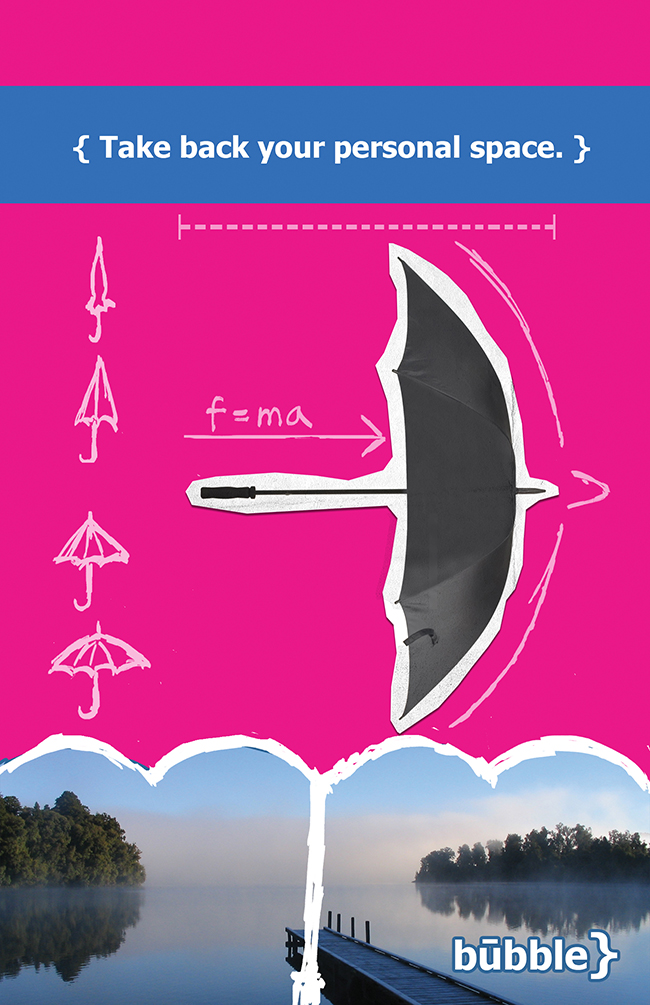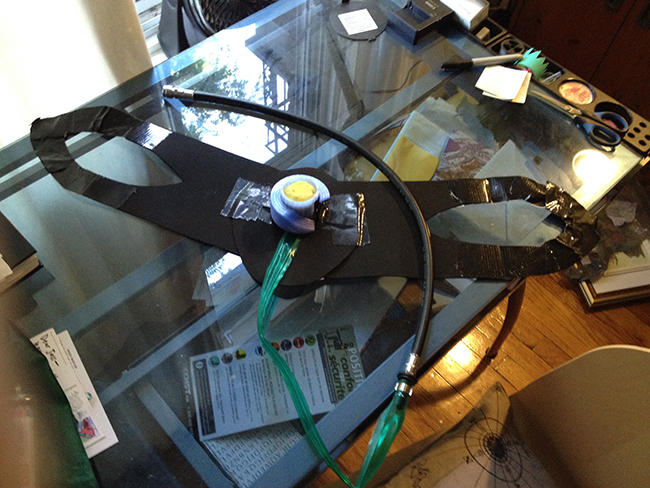This week, I made a game called Cultural Ambassadors by attempting to defamiliarize Space Invaders and the act of shooting.
Given that I had just a week (and that I am trying to limit the number of hours I spend on this one class), I started with someone else’s Space Invader clone made using Construct 2. In playing it, it quickly became clear that this wasn’t quite a perfect clone of the original game, but close enough for the base on which I would build this new game.
Taking a common way that I’ve seen defamiliarization explained (“What if an alien encountered this cultural object – how would they understand it?”) to its natural conclusion, I made a game where aliens are enamoured with our television commercials and think that places like Starbucks and McDonalds are really kind of awesome — and isn’t it a shame that not everyone has access to the rolled back prices of Walmart? So, helpfully, the Golbos on Globes team (they were very impressed by Holmes on Holmes and Extreme Makeover: Home Edition) has decided to make over your planet…starting with your town. And by you, I mean a tiny robot carrying a book with the ability to beam cultural objects up to these aliens to counteract all that they have learned from cable commercials.
As errant hammers fly, there’s the chance that they’ll miss the building that they are converting and accidentally hit you instead. Meanwhile, you send them books, movies, games, music and other cultural objects to take a look at. Those who are affected by them have minor epiphanic moments (“oh I see”, “I understand!”, “now I get it”) and leave Earth’s skies.
Here is the list of items that the game chooses from for you to throw:
“Throwing Cultural Object: ” & choose(“Octavia Butler’s Kindred”,”Will Shakespeare’s Plays”,”Gone Home by Fullbright”,”Jesus Christ Superstar”,”Amadeus (1984)”,”Tanya Tagaq’s Throatsinging”, “Thomas King’s Green Grass Running Water”, “Schindler’s List (1993)”, “Europa Europa (1990)”, “Carl Sagan’s Cosmos”, “Anita Diamant’s The Red Tent”, “Marjane Satrapi’s Persepolis”, “Kurt Vonnegut’s Welcome to the Monkey House”, “Squinky’s Coffee: A Misunderstanding”, “Margaret Atwood’s The Handmaid’s Tale”, “Harper Lee’s To Kill a Mockingbird”, “S. E. Hinton’s Rumble Fish”, “Jean Paul Riopelle’s La Roue/Cold Dog – Indian Summer”, “The Inevitable Defeat of Mister and Pete (2013)”, “Idiocracy (2006)”, “Journey by Thatgamecompany”, “Anna Anthropy’s dys4ia”, “Ralph Ellison’s Invisible Man”, “Arundhati Roy’s The God of Small Things”, “Bryce Courtenay’s The Power of One”, “Paul Coelho’s The Alchemist”, “Richard Adams’ Watership Down”, “Papo y Yo by Minority”, “Simon and Garfunkel’s The Sound of Silence”)
Given that the game was made in under a week, I mostly went with what occurred to me to chuck at aliens if I wanted them to understand my culture beyond McDonald’s commercials – which feels fine for a prototype. However, also, given that the list is short, each entry matters more… I had to decide if my loving a cultural object and thinking that it was interesting was enough for it to go on the list – and I tried to mostly stay away from “canon important cultural objects”, which are mostly the work of dead white dudes, and instead include a bit more variety. Then again, I happen to love Shakespeare and chose to include his work — and I guess that it’s okay to appreciate and love an object even understanding that it might contribute to a problem or be problematic, something that I occasionally wrestle with. I tried to balance it out with work by creators that I feel might be underexposed or would be excluded from the canon.
Something that you might be interested to know is that I have never made a game that involved the act of shooting before. That’s a conscious decision and that might actually be why I chose shooting as something to defamiliarize. However, because I started from Space Invaders, there’s some meaning embedded in the rules already, and the act still feels oppositional. There’s a lot of history in the act of shooting, I guess, and shooting hammers or wifi beams doesn’t erase that, especially in as familiar an object as Space Invaders. Trying to get shooting to feel like something other than shooting is difficult. What I think does work is this idea of accidental or unintended harm on the part of the aliens and their colonizer attitude. What doesn’t work, is, as I’ve mentioned, this sense of opposition — that we should shoot at the other, or assume that they mean us harm.
One of the things that I am quickly realizing about my approach to design work, having done three projects in three weeks, is that I enjoy making things that revolve around some element of humour, but that I want my audience to be in on the joke – or I want it to be possible for them to be in on the joke without too many obstacles.

